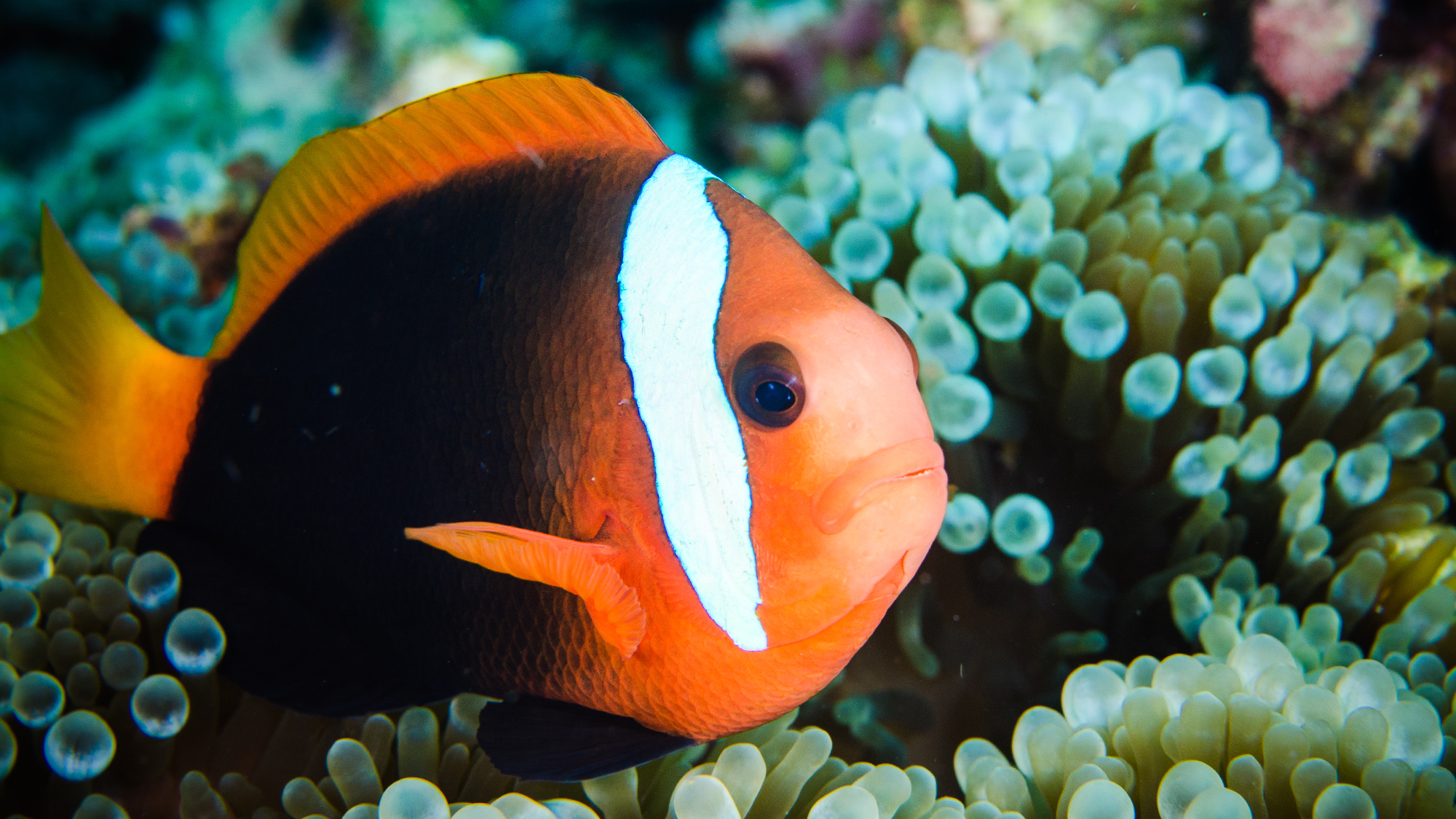

It’s been just about 20 years since Finding Nemo was released in theaters and the lost “little clownfish from the reef” swam his way into our hearts. However, there is way more to coral reef fish than their beautiful scales and fictional tales.
[Related: This rainbow reef fish is just as magical as it looks.]
A study published May 11 in the open access journal PLOS Biology found that some of the fish that live in anemones and reefs go through intense physiological changes when they switch from speedy swimming in the open ocean as larvae to settling down to life on the reef.
Nemo and his young sea turtle pal named Squirt may have had a bit more in common than their age. Like sea turtles, many coral reef fish spawn away from where the animals will eventually settle and live. Adult coral reef fish spawn their larvae in the open ocean and the larvae swim against strong currents to get back to the reef where they will live as adults. Other bottom dwelling marine organisms like sea stars, corals, and urchins also follow this pattern.
“These first weeks of life can be the most vulnerable for coral reef fishes, and if they don’t make it, that means they cannot grow up to be healthy adults and contribute to coral reef ecosystems,” co-author and James Cook University marine biologist Jodie L. Rummer told PopSci.
All of this swimming demands a lot of energy from the tiny fish, but then once they are settled on the reef floor, they must drastically switch gears and survive in a low-oxygen, or hypoxic, environment at night.
To learn more about how this adjustment works, the team collected daily measurements of the cinnamon anemonefish (Amphiprion melanopus) larvae’s swimming speed, oxygen update, and hypoxia tolerance. They observed them in a laboratory setting from the time that they hatched until when they settled down, usually around day nine of life.
“Coral reef fishes, including anemonefishes, as larvae are swimming among the fastest relative to their body size,” study co-author Adam Downie told PopSci. Downie is currently an animal physiologist at the University of Queensland in Australia and conducted the research as part of his PhD at James Cook University. “In our study, maximum speeds were over 12 centimeters [4.7 inches] per second, but for a fish that is the size of your pinky finger nail, that is 10-12 body lengths per second. Comparatively, relative to their size, larval coral reef fishes, including clownfish, outcompete most other marine life in a swimming test and all humans!”
Additionally, they saw that their hypoxia tolerance in the fish increased around day five while their oxygen intake decreased. To investigate how their bodies cope with these lack of oxygen, they sequenced mRNA from larvae of different ages to look for changes in gene activity that occurs during development. These physiological changes were correlated to areas of the gene where hemoglobin are produced and the activity of 2,470 genes changed during development.
[Related: Invasive rats are making some reef fish more peaceful, and that’s bad, actually.]
“These baby fish can change the expression patterns of certain genes that code for oxygen transporting and storage proteins just in time to cope with such low oxygen conditions on the reef,” said Rummer. “These proteins, like hemoglobin and myoglobin, are found in our bodies too and are important in getting oxygen from the environment and delivering it to the muscles, heart, and other organs. Indeed, timing is everything!”
The study found that relative to their body size, cinnamon anemonefish (also called cinnamon clownfish) larvae have the highest oxygen uptake rate of any bony fish currently measured. The genetic changes they can make to take in more oxygen underpin how reef fish can swim at speeds that would make even the most decorated Olympians envious. According to Downie, some studies have clocked clownfish at up to 50 body lengths per second, compared with Michael Phelps’ just under two body lengths per second.
Since the effects of climate change threatens all marine life, the team believes that warmer ocean temperatures could impair clownfish swimming since the energy demands are so high. The warming waters put reef ecosystems at even more risk, in addition to coral bleaching, ocean acidification, disease, and more.
“Next steps would be to see how different climate change stressors, such as temperature and pollutants may impact swimming performance of larval clownfishes and their ability to successfully transition from the open ocean to coral reefs,” said Downie.
